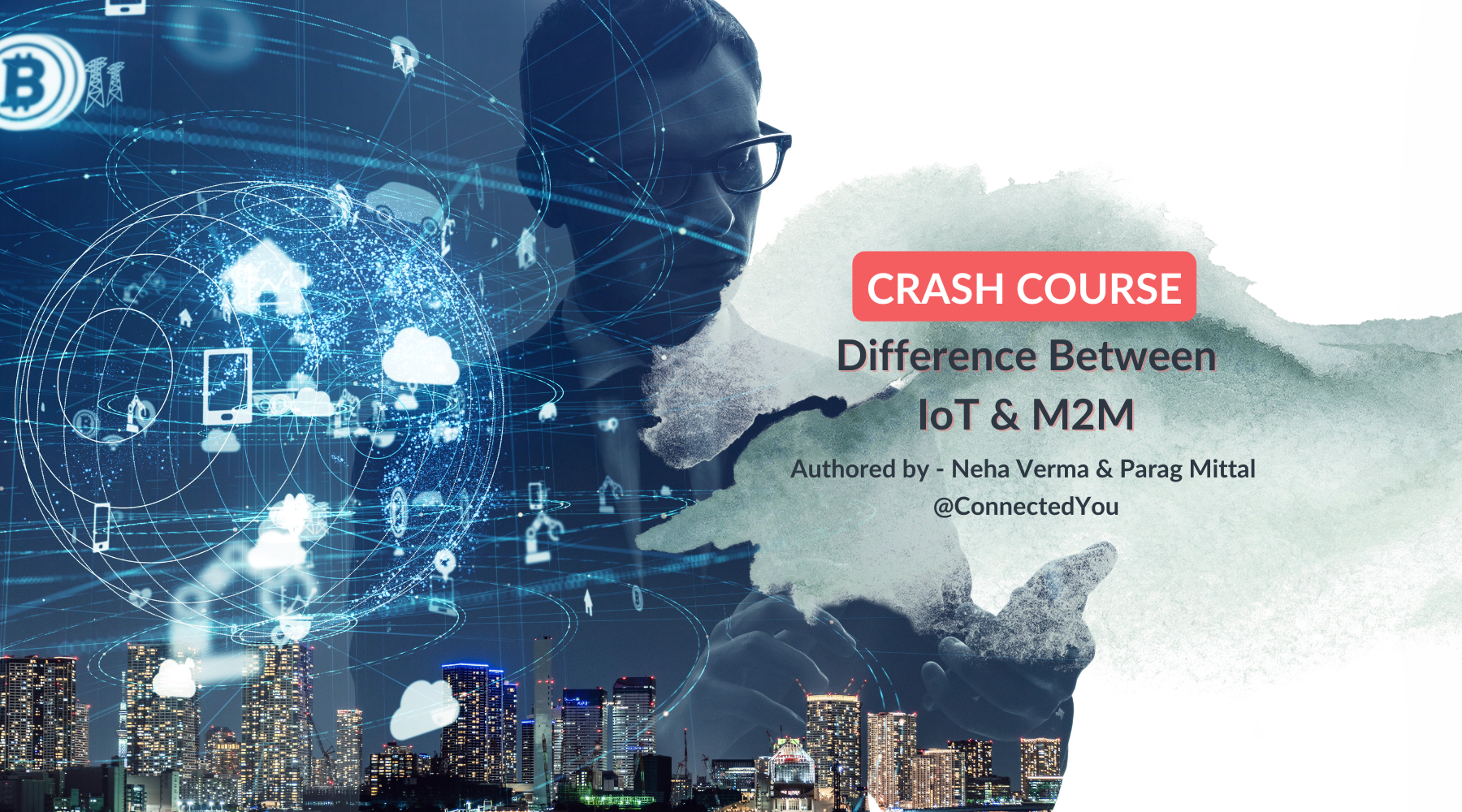
13 Differences Between IoT & M2M
Machine-to-Machine (M2M) and Internet of Things (IoT) are systems that enable devices to transfer data and support the automation of data-driven processes and actions. This helps enterprises to improve efficiency with minimal human interaction. What are the key differences between IoT & M2M?
What is Machine-to-Machine (M2M)?
M2M communication is a solution that connects two or more machines, enabling them to interact and relay data without any human involvement.

How does M2M work?
The M2M system has multiple sensors, an RFID, Wi-Fi, or cellular communications link. Sensors communicate key parameters to the computer. This form of communication takes automated sensor data and transfers it over networks like cellular or Ethernet, which makes it cost- effective.
M2M Use Cases
- Telematics - Telematics is an industry that highly depends on M2M. Telematics applications include a range of services like vehicle tracking, fleet management, satellite navigation and emergency warning systems to name a few. One of the original use cases in the industry is sensor telemetry, that helps in monitoring factors like temperature, energy consumption, pressure, moisture etc.
- ATMs - Sensors in the ATM machines send a signal whenever it’s low on cash. This data-transfer ensures efficiency.
- Vending Machines - Sensor detects when a particular product is running low in a vending machine. This data is transmitted through Wi-Fi or cellular networks to the fulfillment center.
Some other prominent examples of M2M use cases are
- Smart meters
- Asset tracking
- HVAC systems
- Smart factories
What is Internet Of Things (IoT)?
IoT is the network of devices that are embedded with sensors, software, and other technologies to connect and transmit data with other devices & systems over the internet. These devices range from household objects to sophisticated industrial machinery that can be automated, controlled and monitored on-site or remotely by users.

How Does IoT Work?
While M2M is the communication between devices to transmit and collect data, Internet of Things (IoT) builds on that technology to offer user applications. Now machines can interact not just amongst themselves, but also with humans through applications powered by cloud and network integrations.
IoT Use Cases
There are many popular examples of IoT devices around us today. Google Home and Alexa have become common household names. However, the first IoT device dates back to the 1980s and was invented by a Carnegie Mellon University student. He upgraded a Coca Cola vending machine to get information of soda availability on a board in his room.
Other than connecting regular household items, IoT has a major role to play in connecting devices in various industries. Enterprise applications of IoT have a larger impact on a company’s efficiency. Use cases of IoT include -
- Wearables
- Tracking devices
- Smart homes
- Healthcare
Key Differences between IoT & M2M?
The major difference between IoT and M2M is that M2M is used to make the connection between multiple devices whereas IoT is used to make connections of devices for information availability and subsequent human actions. The Internet of Things is an extension of Machine-to-Machine.
Key Differences Between M2M & IoT

Connectivity Solutions For Your IoT & M2M Systems
“One size fits all” approach does not always work. Finding the right SIM card and connectivity solution is important based on the use case. This is where we come in.
ConnectedYou is a one stop shop that delivers next generation connectivity solutions for global IoT/ M2M deployments. Our avant-garde eUICC enabled eSIM orchestration aims to democratize IoT connectivity. Get in touch with us to find the right connectivity solution that will suit your enterprise requirements and use case or visit our shop to browse connectivity options.
Why ConnectedYou?

Our connectivity solution is universally independent from any connectivity provider. Choose from 40+ pre-integrated connectivity suppliers based on your connectivity requirements across different regions.
We orchestrate the critical components that include - eUICC enabled SIMs/ eSIMs, global IoT/ M2M connectivity, unified monitoring & management, and remote SIM provisioning capabilities into a single solution as a one-stop-shop. Here’s why our product is the best solution for your enterprise -
- The largest network of 2G, 3G, 4G, 5G, LTE-M and NB-IoT networks
- Connectivity for countries with permanent roaming restrictions
- Transparent Pay-As-You-Go pricing without hidden charges or minimum commitments
- Single contract enabling hassle free multi-supplier sourcing without lock-ins with any connectivity provider
- Unified platform to manage your IoT/ M2M SIM cards irrespective of the connectivity supplier
- Capability to switch connectivity suppliers remotely without SIM replacement and without any additional transaction costs
- Central support desk for all connectivity issues
FAQ Section -
Q1. Does ConnectedYou provide both M2M and IoT connectivity?
Answer - Yes, we provide connectivity solutions based on use case requirements. You can contact sales@connectedyou.io to discover the best connectivity solutions fit for your enterprise.
Q2. Can M2M work without the internet?
Answer - Yes, M2M connected devices often communicate without using the internet. This however is largely dependent on the use case.
Q3. What communication protocols are often used in M2M Connections?
Answer - The most commonly used protocols in IoT/M2M connections are MQTT, OMA LWM2M, and CoAP. These protocols target low power devices that operate for a longer period of time.
For more information contact sales@connectedyou.io
Written by: Neha Verma, Digital Marketing Specialist @ConnectedYou
Subject matter expert - Parag Mittal, CEO & Co-founder @ConnectedYou
